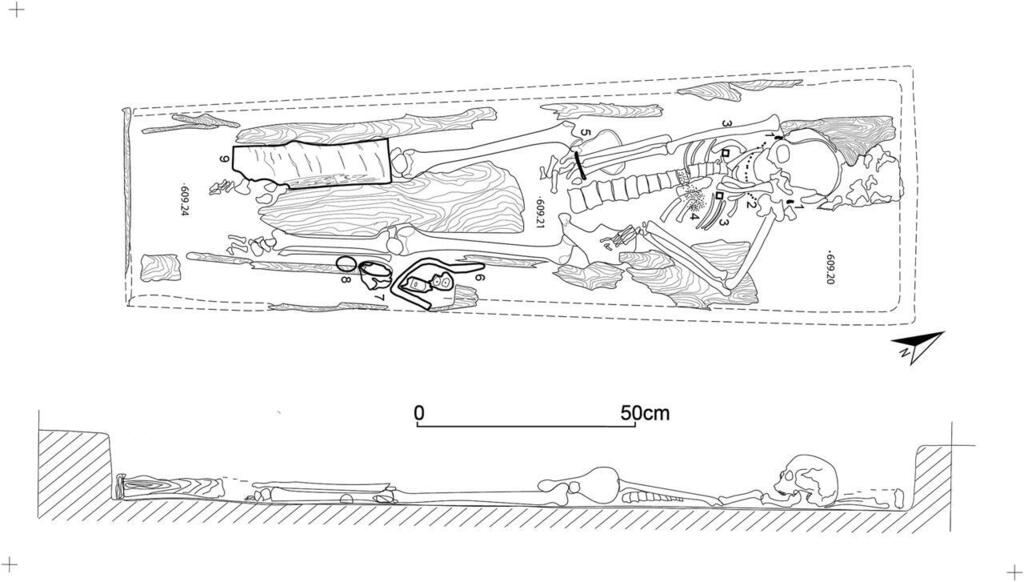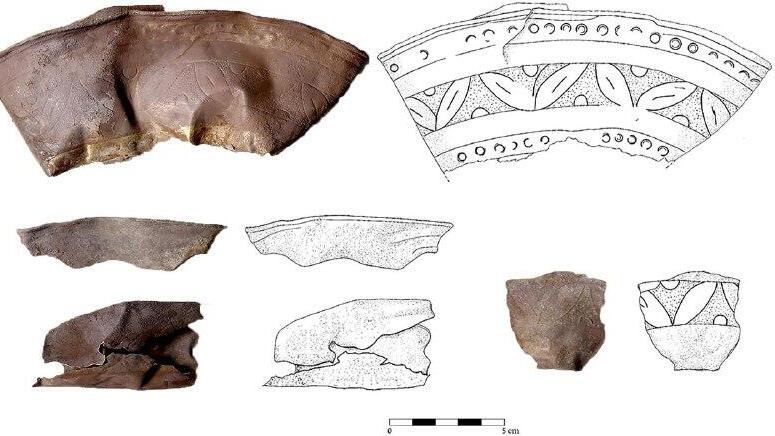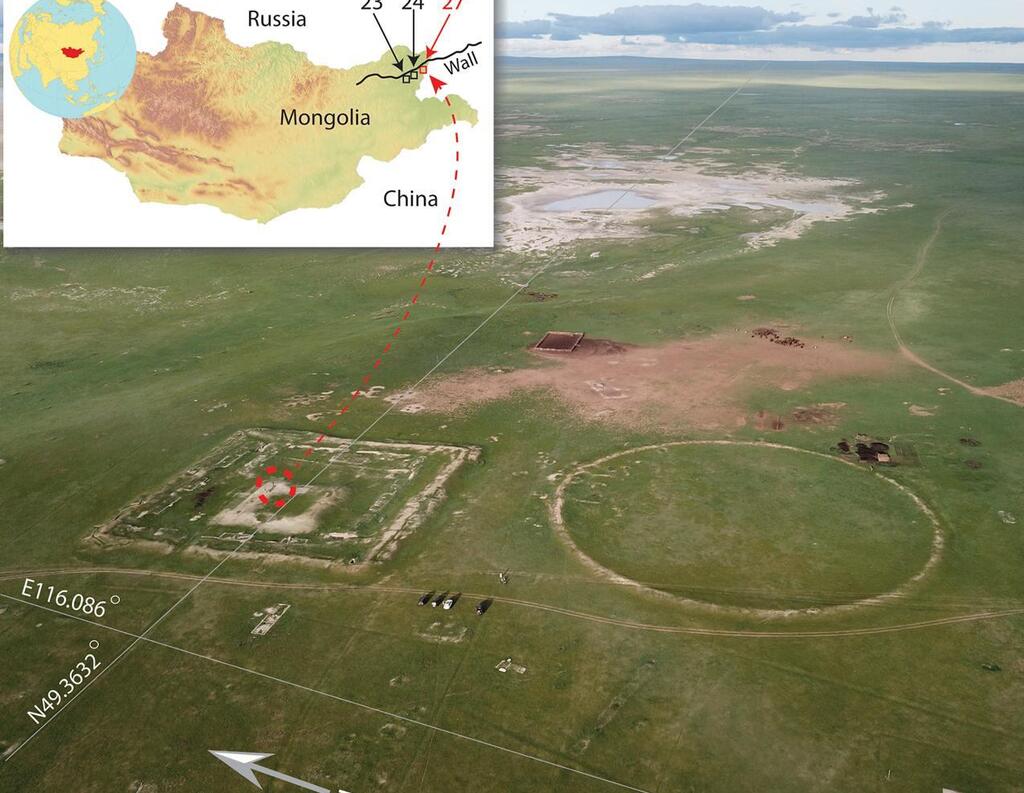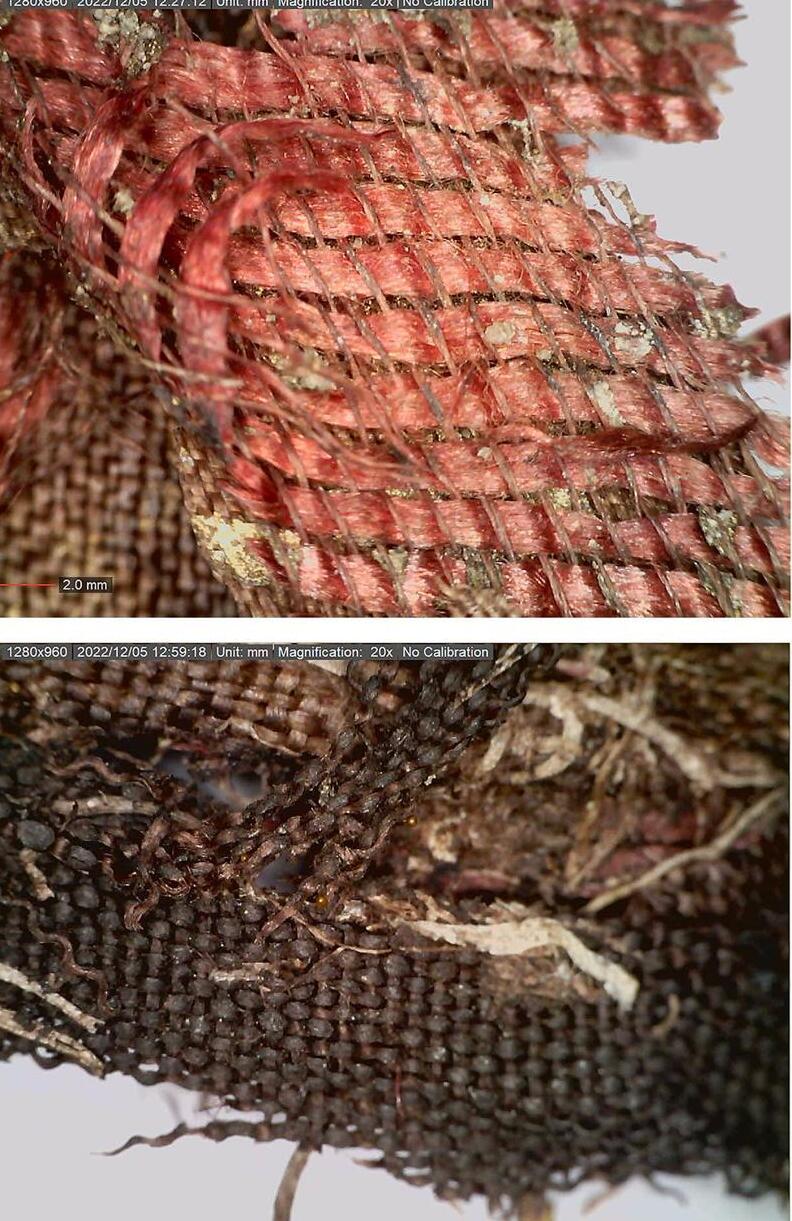A team of Israeli, American and Mongolian archeologists uncovered the ancient grave of a high status woman in an abandoned fortress in Mongolia, dating to the 10th century, according to a study in the journal Archaeological Research in Asia
The Khar Nuur fortress was part of a system of fortifications, better known as the Great Wall of China, in one of the more secluded sections on the borders of Mongolia, Russia and China.
4 View gallery


Illustration of the skeleton found in the archeological dig in Mongolia
(Photo: Archaeological Research in Asia)
"The burial contained a narrow wooden coffin made of larch (Larix sibirica) or pine (Pinus sibirica), 182 × 53 cm in size, oriented to the northeast. A well-preserved human skeleton of an adult (40–60 years old) woman in a supine position was found inside the coffin partially covered by a thin layer of tree bark. The burial assemblage consists of (1) golden earrings; (2) coral and glass beads; (3) golden ornamental plaques; (4) smaller beads originally sewn into fabric; (5) a gold bracelet; (6) fragments of a bronze-framed wooden and leather object, possibly an arrow case; (7) fragments of a bronze vessel; (8) fragments of a silver cup; (9) a birch bark object provisionally identified as a traditional woman's headdress."
Some of the artifacts came from distant sources in China, such as a traditional headdress made of yellow silk and birch bark that would have been found at a distance of 150 to 300 kilometers (93 to 186 miles) away. It is unclear if they were placed in the grave to help the deceased in the afterlife but are an indication of the woman's high political status and connections that gave her access to wealth and objects beyond her borders.
The findings "provide some insight to an understanding of Mongolian history during this roughly 80-year period between the Kitan demise (1125 CE) and Chinggis Khan's enthronement (1206 CE)," the study said adding that it also revealed more information about the vast connections of the empire to other regions in the world, which is a valuable contribution to the study of that time.
4 View gallery


Artifacts found in the ancient Mongolian tomb
(Photo: Archaeological Research in Asia)
The researchers, including Professor Gideon Shelach-Lavi from the Hebrew University, said that there are few tombs uncovered from that period because there are few archeological excavations in Mongolia, and the geographic area specifically has not been studied. The tomb was uncovered in one of the first archeological expeditions there.
4 View gallery


Site of an ancient Mongolian tomb uncovered by an archeological team including researchers from Hebrew U.
(Photo: Archaeological Research in Asia))
They said that the period which lasted 100 years was between empires, and few burials and constructions can be dated to it, making an understanding of the time in terms of its social and political structure difficult.
But the wealth and quality of the artifacts found in the grave tells of the connections and influences of international ties that characterized the Mongolian empire.
4 View gallery


Cloth and beeds among artifacts found in an ancient Mongolian tomb
(Photo: Archaeological Research in Asia)
The archeologists said they plan to continue their study and uncover more chapters in the history of the region. They said that with every excavation they came closer to uncovering the big picture of how the Mongolian empire came to be and what elevated it to its international standing.


